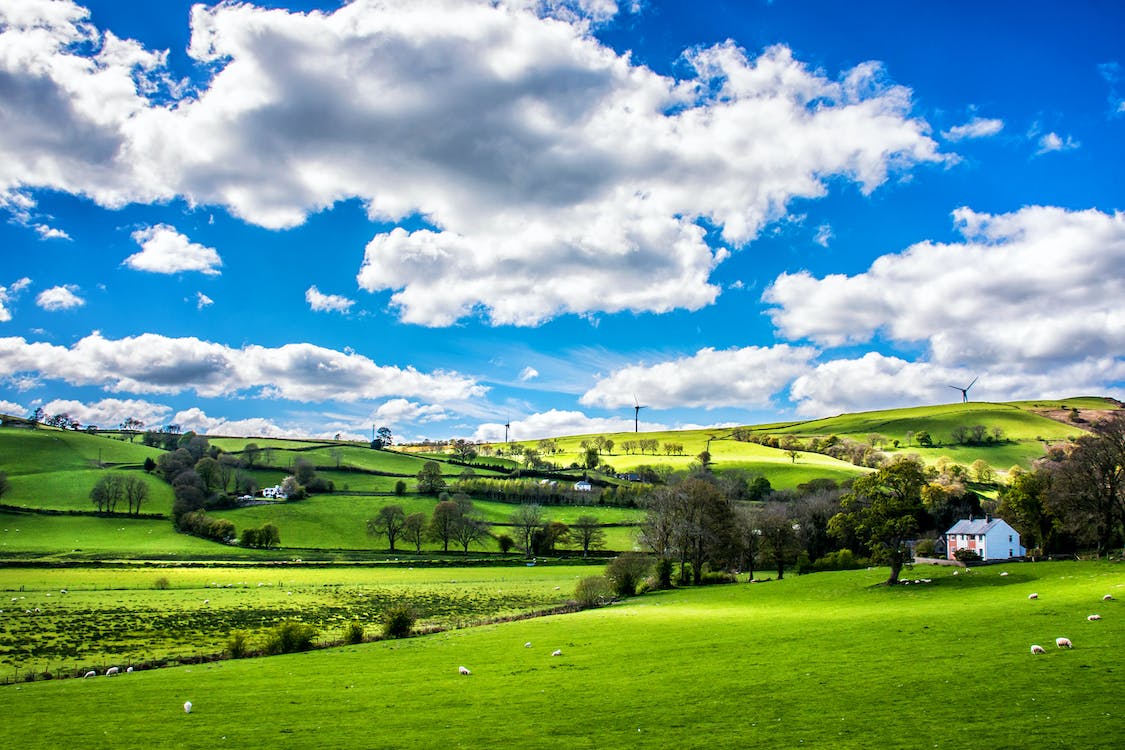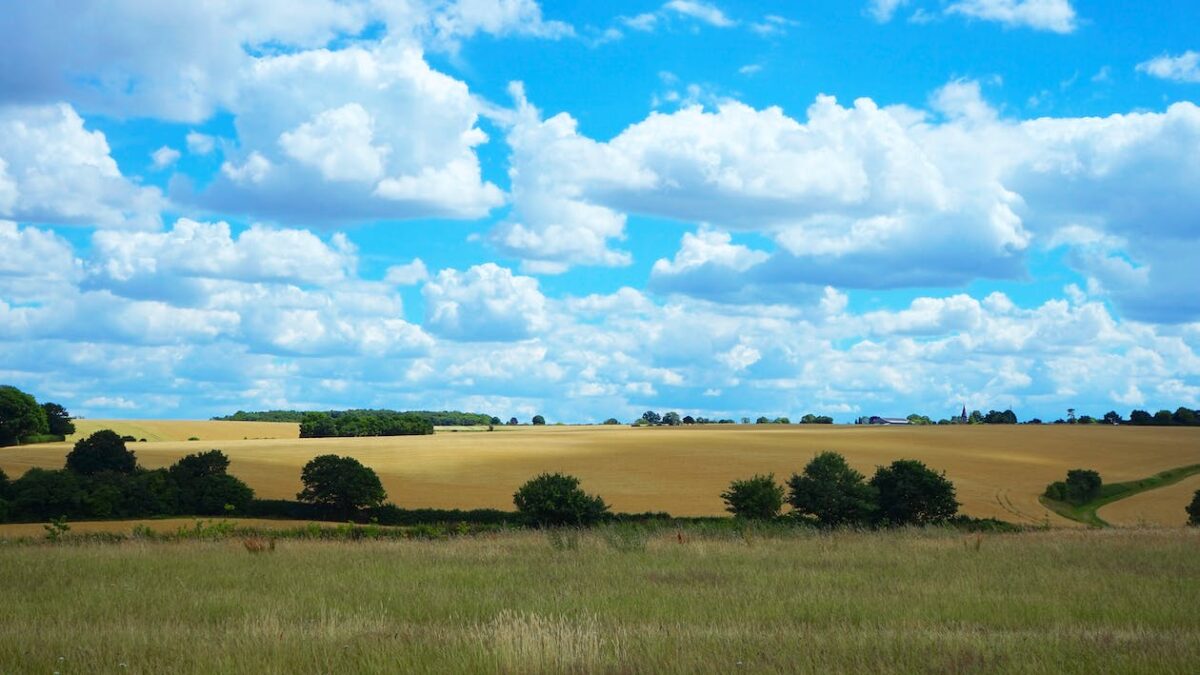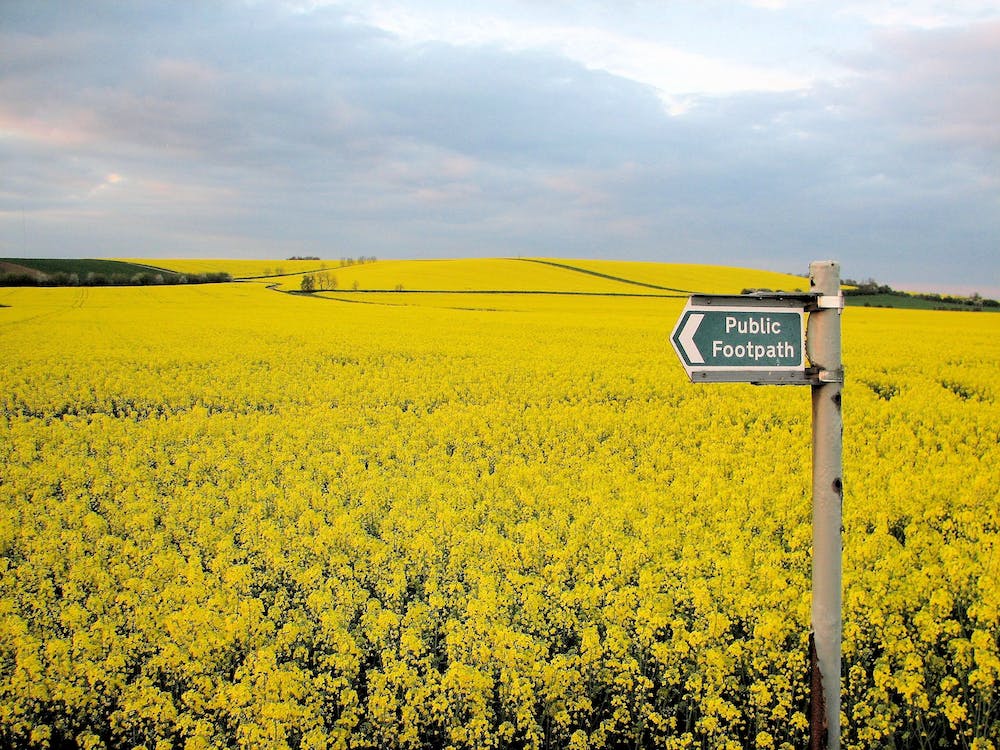
By Franki Webb
(Principal Historic Environmental Consultant at TEP and trained Environmental Archaeologist)
The hedgerows of Britain are an iconic part of our countryside. They divide the fields and meander alongside country lanes. They provide habitat and ecological benefits to the environment, by functioning as wildlife corridors to aid the movement of species though our landscape, but they are also an important component to the historic landscape. The position of hedgerows and field boundaries shows how land was used in the past, and the position and siting of access points, tracks and footpaths often indicate the historical way people would have accessed and travelled through the landscape. Hedgerows within wider views provide a distinctive historic character.
Hedges have been used as field boundaries in England since the prehistoric period before the Romans arrived on our shores. However, they became a standard part of the landscape during the Middle Ages, situated among open field strips, around parish boundaries, between meadows and pasture, around paddocks and closes attached to a village. The planting of hedges increased, during the 15th century as part of informal enclosure, enclosing open fields, using plants dug up from the woods or from nurseries. Between 1750 and 1850 many individual enclosure acts were passed with almost 28,000km2 of land affected, with mainly hawthorn hedgerows planted in straight lines. The Enclosure Act of 1773 required that the owners of the land had to physically enclose it, making landownership an even more exorbitant and arduous endeavour.
Although not typically heritage assets in themselves, some hedgerows are important as they provide an important element of the setting of heritage assets, or they form an intrinsic part of the wider historic landscape and overlie older, sometimes prehistoric, boundaries such as ditches and eroded banks. Therefore, if removal is proposed as part of a planning application, then its impact on the heritage significance of the area and its impact on the setting of any heritage assets around may be considered in accordance with planning policies in the National Planning Policy Framework.

They are also offered some level of protection from the Hedgerows Regulations 1997 in England and Wales if they have considerable historic and archaeological significance. This complex mechanism offers some protection for hedgerows, so long as they fulfil the criteria set out in the Regulations. According to Historic England, in some instances the hedge itself may be protected by a specific Enclosure Act. For a hedgerow to be considered historically important, it must have existed for 30 years and also fulfil one of the following criteria:
Generally, it is difficult to identify historic hedgerows purely based on desktop research, as dating is based on cartographic evidence and detailed species analysis carried out by a trained ecologist/arboriculturist. However, cartographic data is not always accessible, and dating hedgerows based on the ecological/arboricultural “Hooper Formula” is notoriously unreliable, as hedges may have been planted with a mixture of species and there is geographical variation. Also noted by Historic England guidance, ”In upland areas and the north of England hedge species are less diverse.”

Along with the uncertainty of dating, the regulations have also been criticised as being overly complicated. Case law precedent confused matters even further with hedgerows or historic field boundaries being deemed ‘important’ under the Regulations if they can be demonstrated to exist on the appropriate Parish Tithe map. In 2003, a proposal to remove a hedgerow in Cornwall was refused after it was found to have been accurately recorded on a tithe map and was therefore of sufficient age to be protected under the Hedgerow Regulations 1997 of the Environment Act 1995. The inspector concluded that as the hedgerow was indicated on a Parish Tithe map dating from 1840 or 1841, it was of sufficient age to warrant protection. Under the regulations, the hedgerow may be deemed ‘important’ if they are recorded in a document, which dates prior to the local inclosure act within a record office. Confusion came from the principle that the 1997 regulations did not define a hedgerow.
However, there are several ways that heritage specialists can determine the age of hedgerows that may be deemed historically important in an ancient landscape. Archival analysis of data on hedgerow history and the identification of historic hedgerows and hedgerow networks can be collated from information at local archives and record offices, such as estate maps, tithe maps and awards, enclosure maps, charters and manorial records and early editions of the OS. Additionally, Historic Landscape Characterisations are produced on a county basis in England, through a programme by Historic England.
Despite the protection afforded by the 1997 regulations, recent years have seen the disappearance of miles of English hedgerows due to the difficulty of maintaining them. With the continuing loss of hedgerows, local communities and stakeholders are encouraging developers to preserve historic boundaries in their detailed proposals, and many local plans situated in more rural landscapes have adopted policies in order to preserve their environmental, landscape, cultural or historic interest.
At TEP, our trained heritage specialists carry out thorough historic hedgerows assessments either as a standalone report or as part of a desk-based assessment; this helps avoid doubt and preserves the hedgerows that are deemed historically important to complement and retain heritage in our countryside. Although the landscape continues to evolve to meet the needs of an increasing population and changing climate, it is also important to retain the history of the countryside for present and future generations to appreciate and value.








